Working and sheltering at home may have created an environment that's toxic to allergy sufferers and unpleasant for everyone else. We pick the latest in home air purifiers.
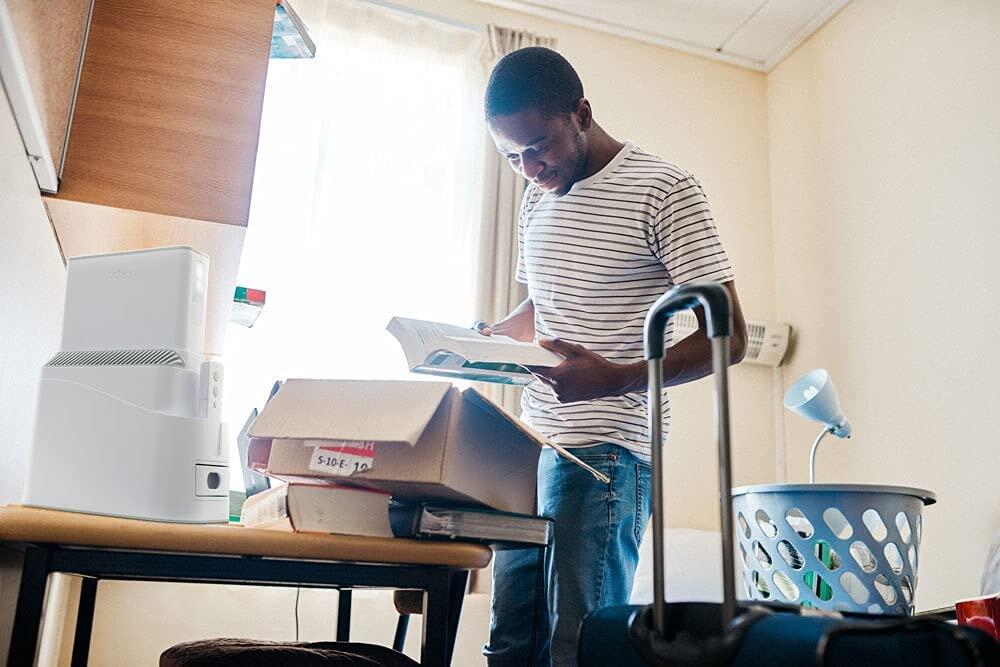
Celios G200 air purifier
Image: Celios
From the gross-but-true files: Dust in your home is made up of about 50% dead skin cells. The rest is composed of plant pollen, human and other animal hairs, textile fibers, paper fibers, minerals from outdoor soil, burnt meteorite particles and various other bits of the local environment.
Sheltering at home during the pandemic brought a more-than-usual amount of bodies together throughout the day. Everyone at home was a dramatically different pre-pandemic, with a home cleared out in the early morning with residents jettisoning off to work and school, only to return in the evening. The current build-up of dust and other particles has created surroundings that wreaked havoc on those with allergies.
Additionally, by adhering to strict safety protocols for more than a year, people have grown accustomed to sanitizing, avoiding and removing toxicity in the environs.
The general consensus has been that fully remote work-from-home will soon evolve into a hybrid model. Through at least this fall many students and workers will be given the choice of continuing remote until they are comfortable enough and feel safe enough to step onto either the school grounds or their office lobby.
SEE: Photos: Tech gadgets to make air time more productive (TechRepublic)
More people will continue to stay at home both during the day and in the evening. Many, notably those who were forced to shelter alone, adopted what are being called COVID-19 pets, adding a new level of elements to a home's air quality. Spring sprung many allergens.
The bottom line is that we must be mindful of air quality, and this time, it's within our homes.
"We learned from COVID-19 we need to do better with respect to indoor air quality," said Dr. Steven Haywood, an advisor to GreenTech Environmental, board certified emergency medicine doctor and former respiratory therapist. "We now know air purification and ventilation is one key to preventing the spread of contagions, and now that we know we can't ignore it; we need to find ways to bring the outdoors inside. It isn't only viruses we should be worried about. Asthmatics and those with COPD know how dust, dander, and volatile organic compounds, called VOCs, like fumes from carpets and paint negatively impact indoor air quality and our ability to function at our highest productivity levels."
While keeping a nursery's air fresh is obvious, on the other end of the spectrum, seniors are more affected by the state of the air around them. They "tend to spend more time indoors where pollution levels are about five to 10 times higher than outdoors," said OneLife CEO Christoph Burkhardt, a health tech innovator and author. "Comorbidities make the elderly more vulnerable to the effects of fine dust and ultra fine particles, and aging bodies are not well equipped to deal with inflammation which has linked air pollution in the elderly with a form of 'silent stroke.'"
One highly recommended way to tackle allergens is to purchase an air purifier. Today, purifiers range in size from those that can be worn around the neck to nearly industrial-grade models the size of dorm fridges and even larger.
"During the high allergy season, it is best to use a high-efficiency HEPA filters," said Chris Winters, technical specialist at the Redmond, Washington-based CieloWigle Inc., an HVAC and smart-home company. "It forces air through fine trapping the harmful particles, including pollen, dust mites, pet dander and tobacco smoke. But after some time, the filters can become clogged, and instead of filtering the air, the trapped particles would be forced into your room. To avoid this, you must clean the filters regularly. How often they should be cleaned depends on your usage, but two weeks or monthly is recommended for HVAC systems during the peak of summer."
Peter Mann, CEO and founder of Oransi (his mod jr. purifier model made this list, below) concurred: "To effectively remove allergens, which are airborne particles, most importantly you need an air purifier with a HEPA filter and sufficient air flow for the room size. No other feature is needed nor will impact performance." Monitoring your lifestyle is critical, too. "Limit outdoor activities if your allergy triggers are present," Mann added. "MapMyAir.com shows allergen levels down to five meters of your location as well as a three-day forecast to help you plan."
Charlotte Spence head of sleep health research at Mattress Nerd strongly advocates for a purifier in the bedroom. "It's a simple premise: the easier it is to breathe, the better you sleep. However, with air quality, purity can be microscopic so you often don't recognize when your air isn't as clean as it could be." Spence also said it's important to keep the purifier by your bed "When you are breathing in cleaner air for those 8 hours (fingers crossed) per night that you are asleep, you will feel better when you wake up in the morning. Your body will be less likely to have strong reactions such as allergies, sinus infections, or even dry mouth, nose, or eyes."
Nearly all top-quality purifiers will use a HEPA filter, said Glenn Wiseman, sales manager of Top Hat Home Comfort Services, a Canadian-based company with an expertise in indoor air quality and air conditioning for homes. He said, "Charcoal and carbon filters in a system helps to remove odors and chemical vapors." HEPA "is a hospital-grade filtration system that is capable of removing nearly all allergy-aggravating contaminants," and will help in what Wiseman said anyone with allergies should aspire to do, eliminate all allergens, and the best way is through the proper use of an air purifier. "This time of the year can be very rough for people with allergies," he said.
A purifier is beneficial beyond its primary purpose. "Most basic air purifiers containing a HEPA filter will be effective, but it may be of interest to note that some products have a fan which can be beneficial to safely circulate air in the home especially during fire season," said Dr. Sanjeev Jain, MD, PhD, allergist and immunologist at Columbia Allergy. "There are also some that contain humidification which may be beneficial during the winter or for patients with an irritated airway or nasal passages from asthma or allergies."
It can be a challenge to choose one, but once you've established what you need purified and a proper price point to fit into your household budget, you will have many to choose from.

Image: EnviroKlenz
The manufacturer said it is 99.9% effective in helping to ward off viruses, according to recent testing, conducted against Staphylococcus epidermidis (bacteria), E. coli (bacteria), and phi-X174 (virus). The virus tested is what the FDA terms as a surrogate virus for COVID-19. The EnviroKlenz Air System Plus captures and neutralizes odors and VOCs, which include mold, pet dander, smoke, dust and more. The air purifier is made up of a three-stage filtration system: the EnviroKlenz Air Cartridge, a medical-grade HEPA filter and UV-C lights.
The company recommends users replace the air cartridge ($80) and HEPA filter ($120) every six months. The UV light system ($32) lasts about 18 months, available on the company's site.
$789 at Amazon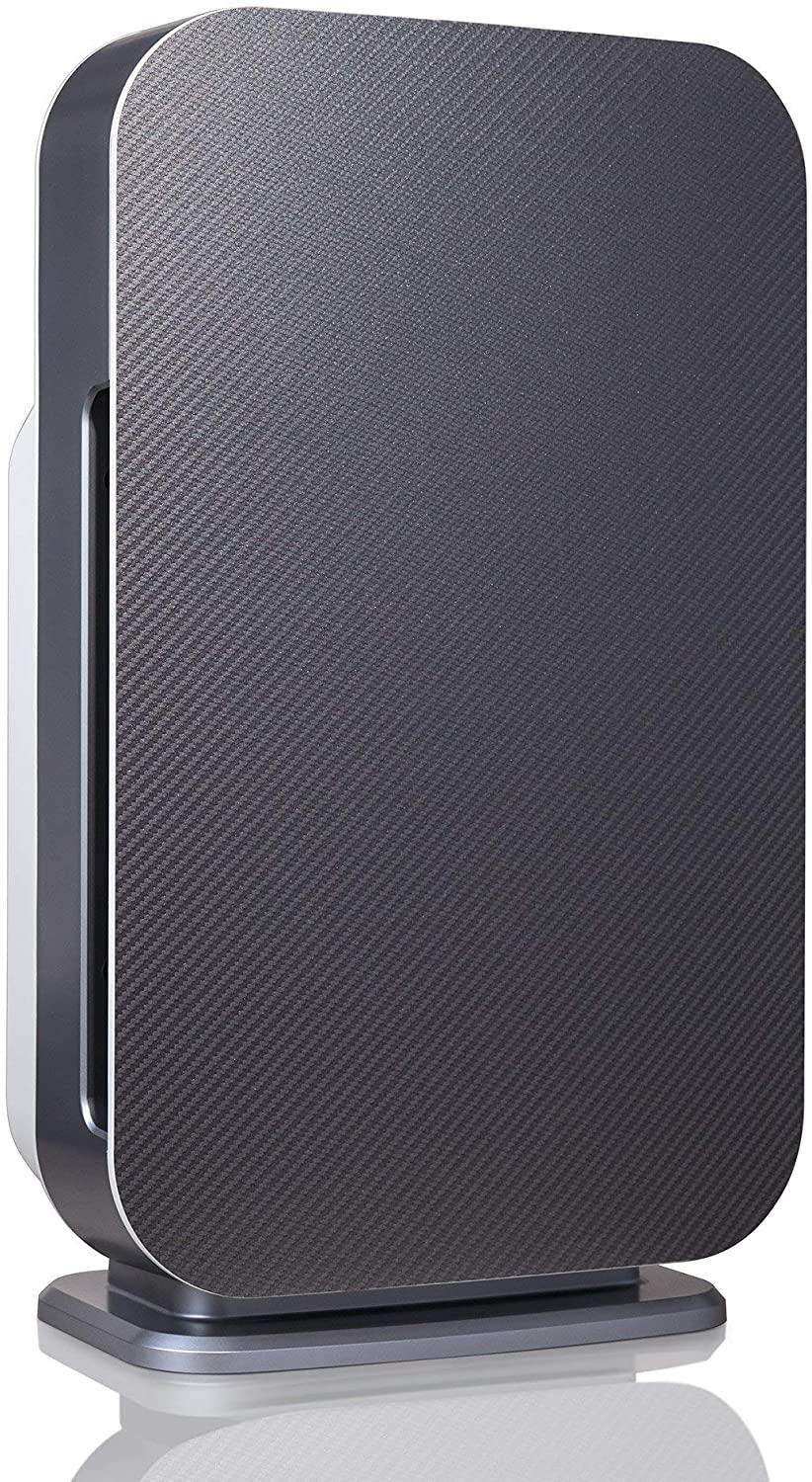
Image: Alen
Alen said its circulation purifies 700-square feet every 30 minutes for 99.99% airborne particle removal to capture allergens, dust, mold and pet odors, with an option to further purify against smoke. The medical grade filtration H13 true HEPA machine is available in six colors with the choice of three different types: dust, mold, pet odors; dust, mold, pet odors plus smoke; and dust, mold, pet odors and heavy smoke. A "lights out mode" turns the purifier's lights out for a sleep mode. It has low energy consumption (50 watts on turbo speed, the lowest setting). Alen said the purifier uses less than 50 cents per month in electricity.
Alen suggests the BreatheSmart Flex's filter B4-Fresh ($99) be replaced every nine to 12 months.
$349 at Amazon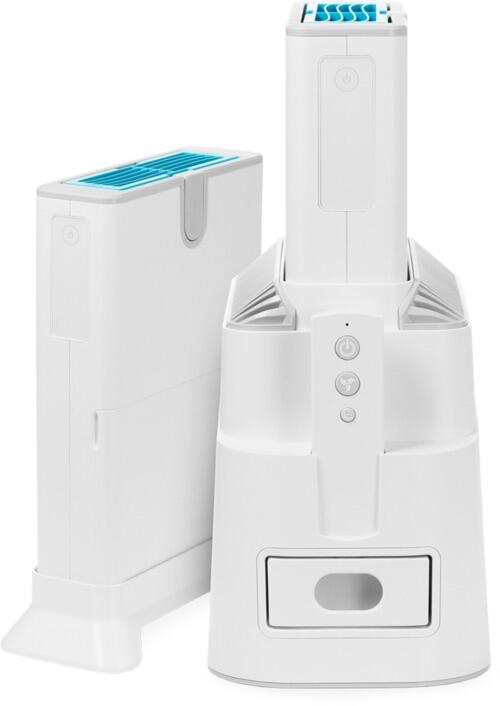
Image: Celios
The Celios G200, said the company, delivers "cleanroom-quality air, providing purification of ultrafine particles, bacteria, allergens, pollen, mold spores and VOCs." Celios said the G200 was designed to filter ultrafine particles down to 10 nanometers in size. Its three-stage filtration system removes allergens, mold and up to 99.99999% of airborne viruses and bacteria, which the company said is 3,000 times more effective than HEPA standards, a 70-year old technology. The company also says it's even effective at capturing the SARS-CoV-2 virus.
Celios said the third-party labs testing the G200 are Blue Heaven Technologies, Nelson Labs and Intertek. Studies are available on the Celios website. The G200 is designed for smaller spaces of up to 250 square feet. It has a Bluetooth remote control that the company said "works through walls." It's recommended that the filter ($99) be replaced every eight months.
You can also purchase the unit and filters on celios.com.
$599 at Amazon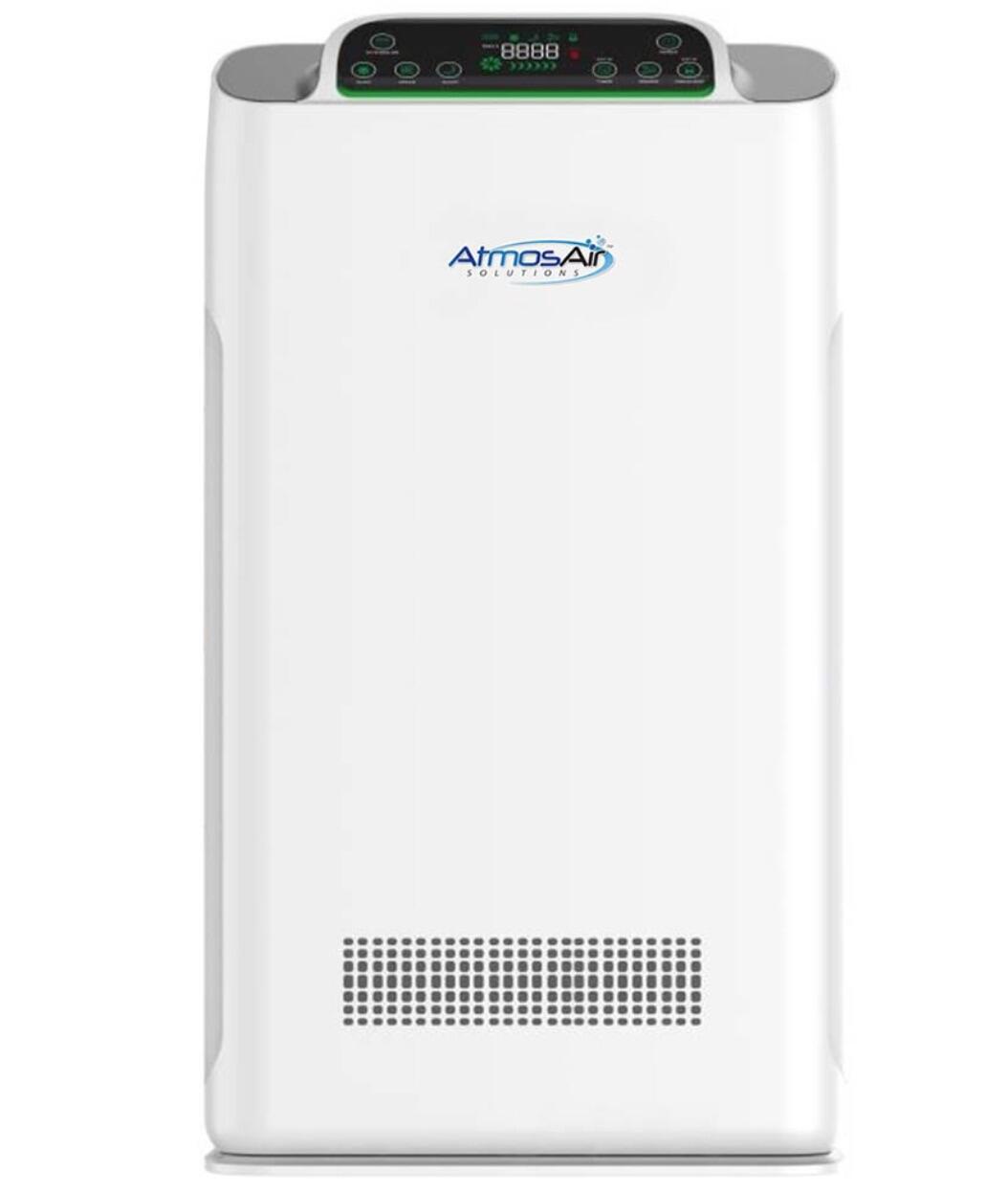
Image: AtmosAir
Designed for rooms up to 800 square feet, the AtmosEverest incorporates HEPA filtration and UV disinfection is integrated with bi-polar ionization, which "emits ions into the air to suppresses airborne and surface micro-organisms and pathogens, including viruses, bacteria and mold, and reduces odors as well as unhealthy and irritating volatile organic compounds (VOCs) and is effective against the spread of coronavirus," said Tony Abate, vice president and CTO at Atmos Air Solutions. "The bi-polar ions seek, attack and attach themselves to airborne viruses, odors and pollutants, rendering them inactive." The company says the unit was tested by Microchem Laboratory, which tests sanitizing products registered by the EPA and FDA. Microchem confirmed that the presence of the coronavirus was reduced by 99.92% within 30 minutes of exposure to AtmosAir's bi-polar ion technology. Atmos recommends the filter be replaced quarterly when the unit is used 24/7.
$895 at Flaghouse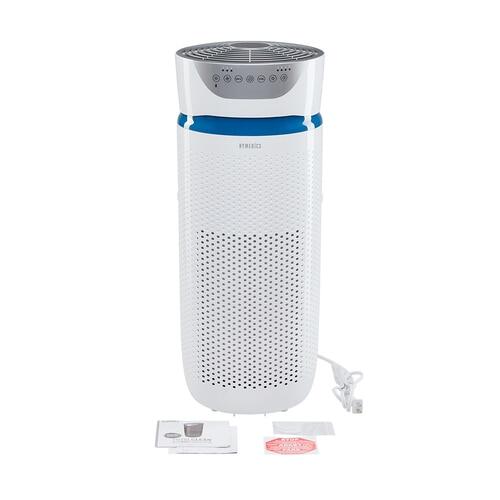
Image: HoMedics
It features a HEPA filter and removes up to 99.97% of airborne particles as small as 0.3 microns. A carbon odor filter reduces unwanted household odors and VOCs, and a pre-filter captures larger particles. It also has UV-C technology that HoMedics claims kills up to 99.9% of bacteria and viruses, and an ionizer releases negative ions to help the purification process. There are five settings to adjust to space, and it has automatic shut-off. Also included for aromatherapy are three essential oil pads and two demineralization cartridges. It covers rooms up to 343 square feet. It's now on sale for $224 for Mother's Day. HoMedics recommends filters ($45) be replaced annually.
$300 at HoMedics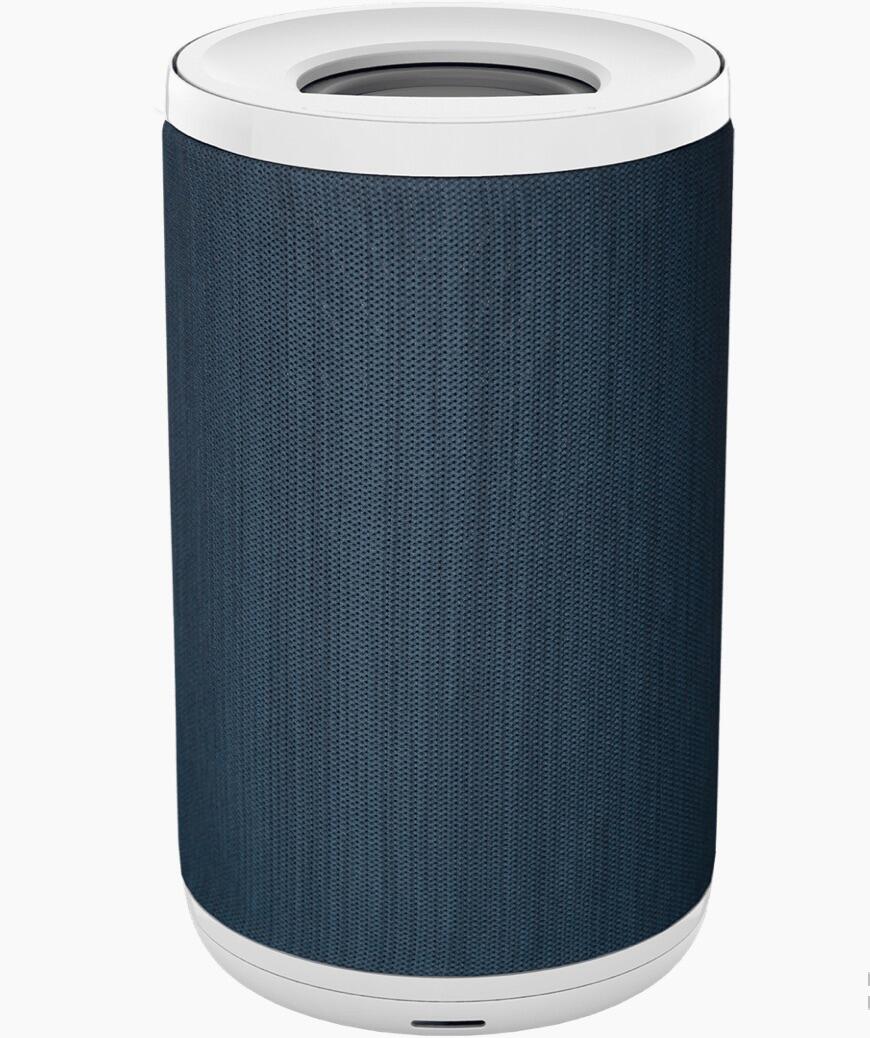
Image: Aeris Aair
The Aeris Aair Lite, said a company rep, has an upgraded air filtration, compact design, quiet operation and real-time air quality updates. It's equipped with Wi-Fi to control the unit and create schedules from a smartphone. It has three levels of filtration, traps large particles like pollen, dust and other allergens, and removes bacteria, mold spores and other microscopic particles. It is on sale for $449 and comes in two colors, Nimbus Cloud and Sailor Blue. Aeris recommends the filter ($99) be replaced every nine months.
$499 at Sylvane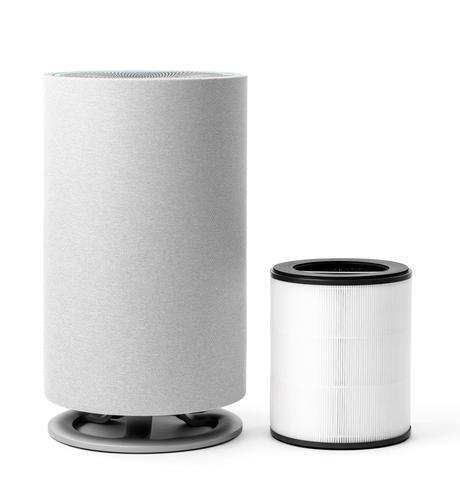
Image: Oransi
It has a true HEPA filter to capture all types of allergens and provide sufficient air flow for the average work-from-home space of 878 square feet. It reportedly cleans the air completely two times hourly. The mod jr. has a smart design: A dirty filter will never be touched because there is a glass user interface to the cylindrical shape with a blue handle. Precise fan speed can be set. It removes allergens, asthma, dust, bacteria, pollen, mold spores, pet dander, smoke, viruses and VOCs. The mod jr.'s filters ($72) will last between six and 12 months. The filters and unit can also be purchased from Oransi.
$399 at Amazon
Image: MilaCares
Mila is the first smart HEPA air purifier to deliver a guaranteed level of clean, with proof you can actually see, the manufacturer said. Mila gives users daily control and understanding of the air around them anywhere with its simple smart control iOS and Android apps. Mila's algorithms combine the physics of air flow and air filtration with real-time data from eight built-in air-quality sensors to monitor air from every angle: airborne particulate, humidity, temperature, chemicals, carbon dioxide, room presence and differential pressure. Mila is also the first smart HEPA air purifier with a built-in carbon-monoxide sensor. Mila reportedly can clean the air in a room up to 1,000 square feet.
There are seven different filters available on the milacares.com website, each based on lifestyle and need, all of which should be replaced every six months:
- The Basic Breather ($59)
- The Big Sneeze ($69)
- The Rookie Parent ($69)
- The Critter Cuddler ($79)
- The Home Wrecker ($79)
- The Mama-to-Be ($79)
- The Overreactor ($99)
"House" - Google News
May 05, 2021 at 02:21AM
https://ift.tt/3vIFsiG
Top 8 air purifiers to keep your house and home office fresh and clean - TechRepublic
"House" - Google News
https://ift.tt/2q5ay8k
Shoes Man Tutorial
Pos News Update
Meme Update
Korean Entertainment News
Japan News Update
Bagikan Berita Ini















0 Response to "Top 8 air purifiers to keep your house and home office fresh and clean - TechRepublic"
Post a Comment